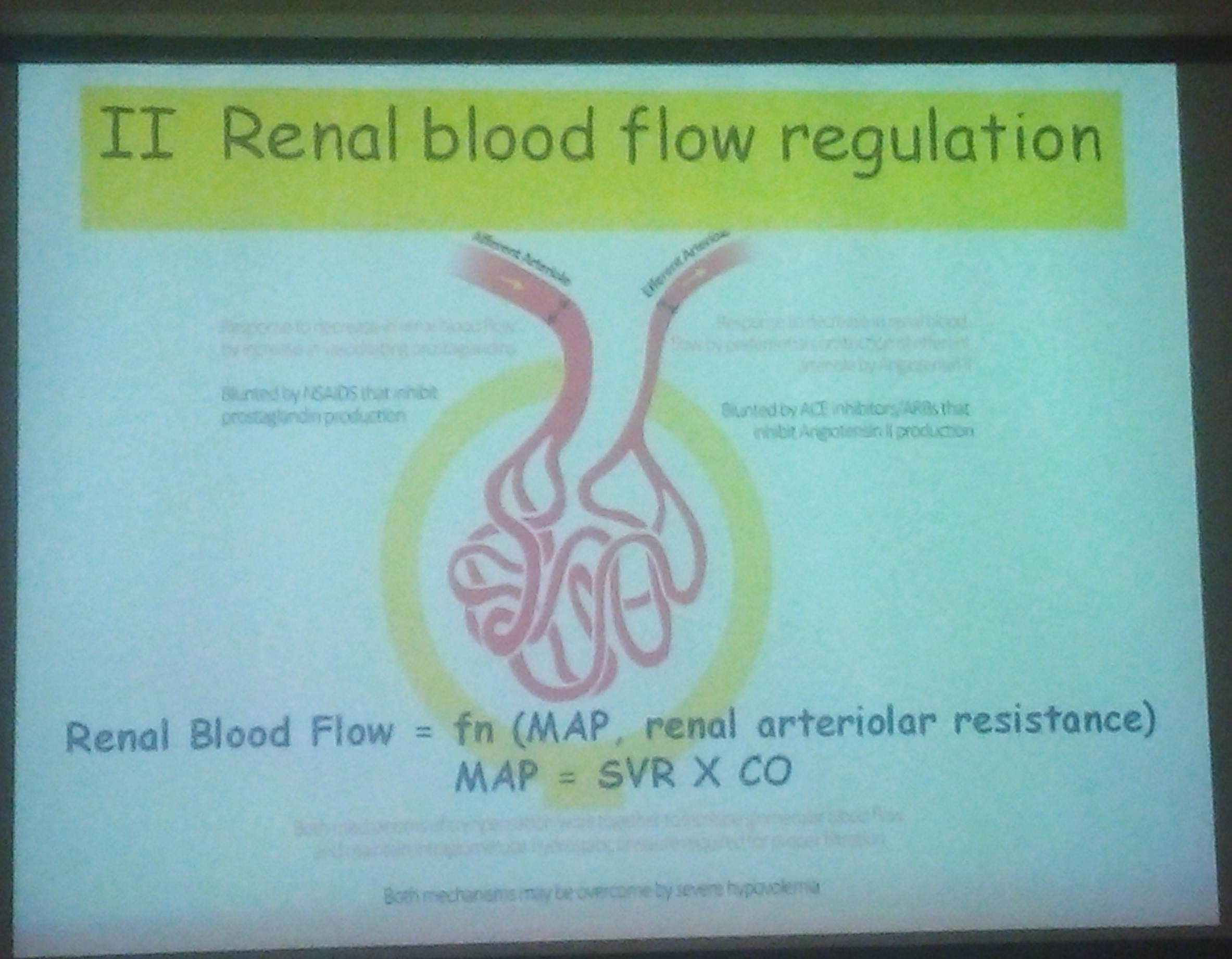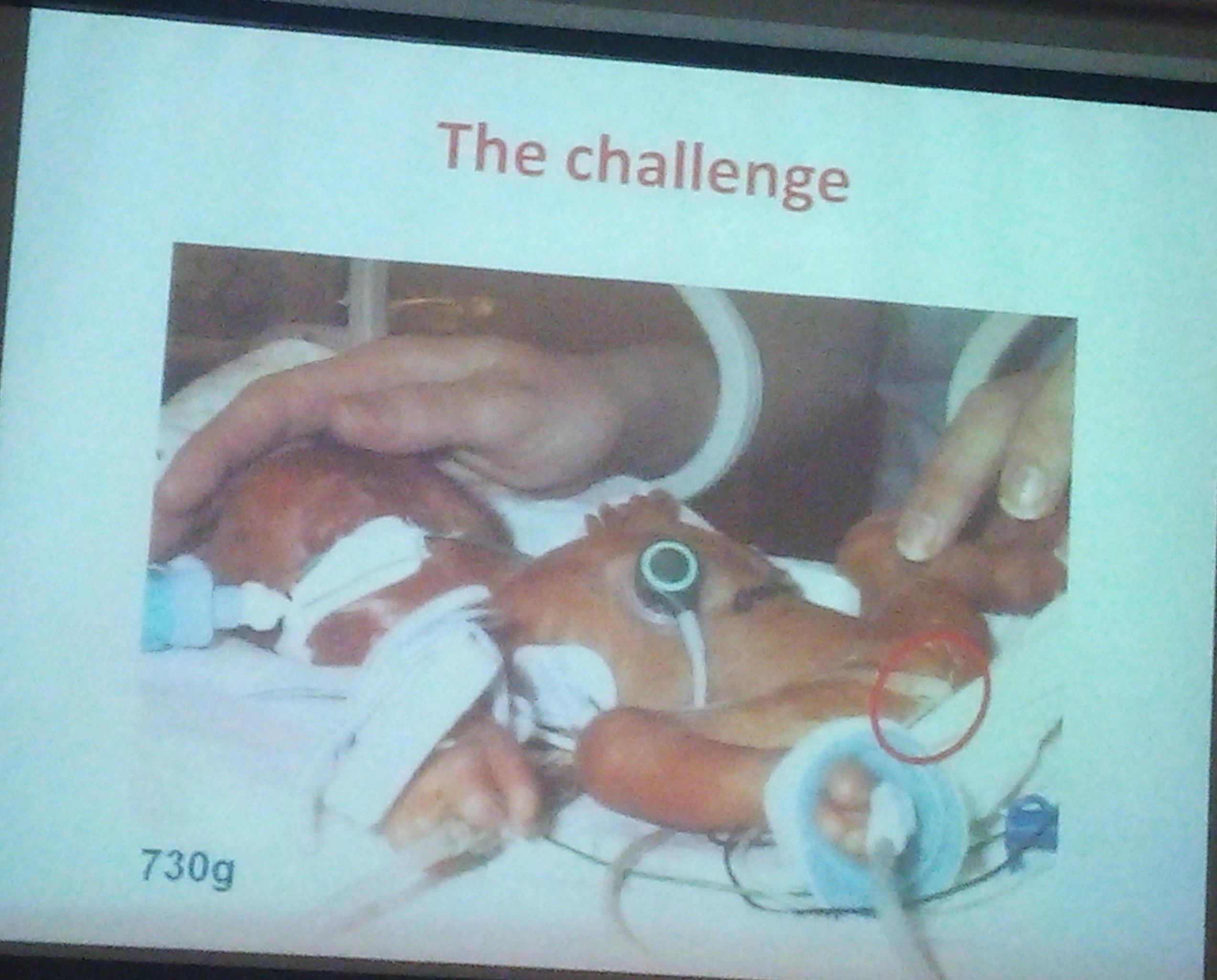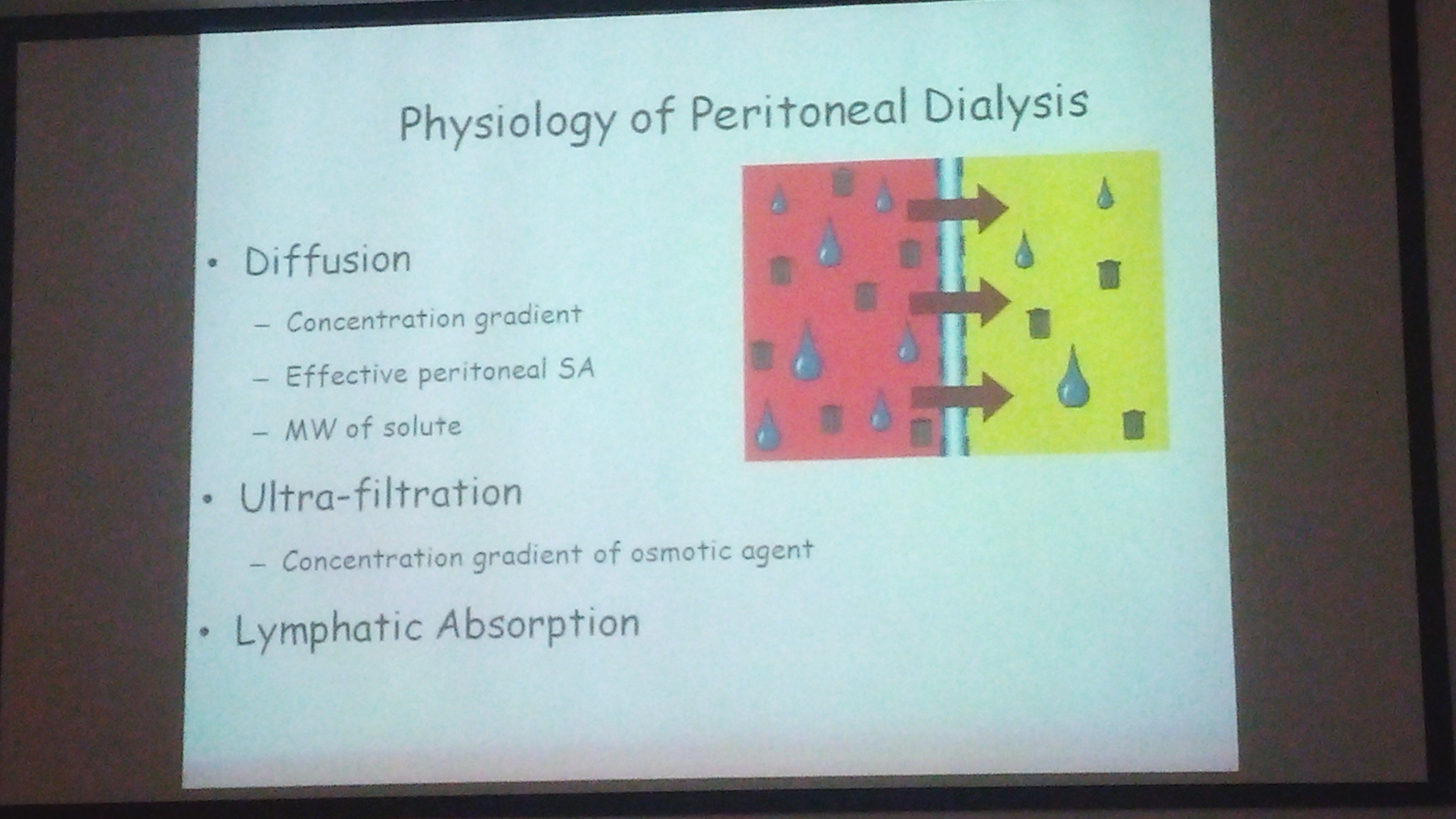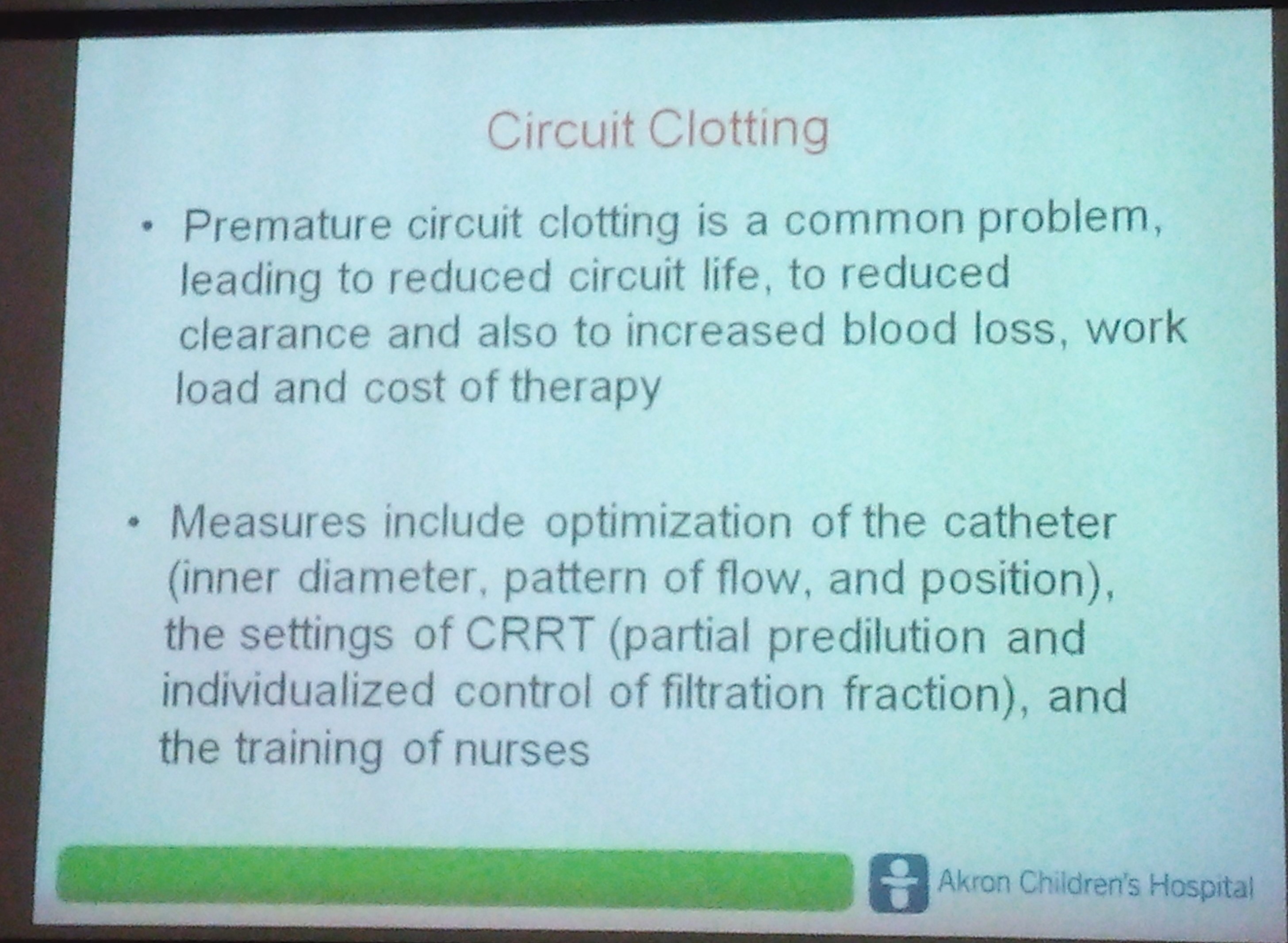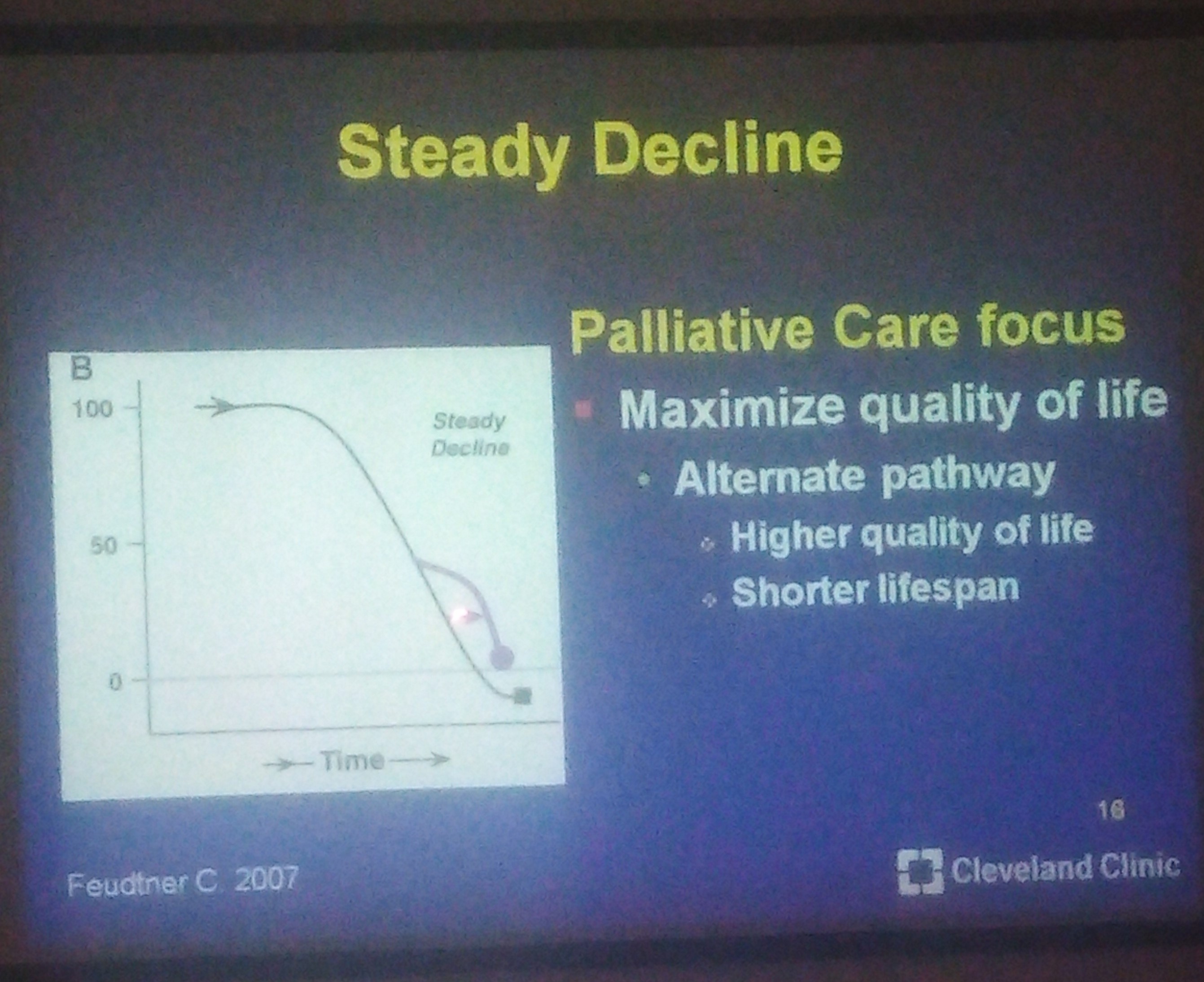I completely agree with Dr Ravi R paper on difficulties we face in treating children with rare disorders like Cystinosis and aHUS where noone seems to help these children with drugs and treatment and we struggle for it. Appreciate Dr Ravi's foundation on Cystinosis.
CYSTINOSIS a truly orphan disease - Report of the Cystinosis Foundation India | Rajan | Rare Diseases and Orphan Drugs http://rarejournal.org/rarejournal/article/view/81
Friday, July 29, 2016
Cystinosis: Really an Orphan for Developing world
Wednesday, June 22, 2016
Lung ultrasound in Pediatric Fluid Overload
Lung ultrasound imaging may be superior to both echocardiographic methods and BIS in detecting volume overload in children with ESRD. Given the practicality and sensitivity of lung ultrasound imaging, this technique can be adopted alongside clinical examination and blood pressure in the routine assessment of fluid overload in children with ESRD.
An excellent study published in Pediatric Nephrology on the same
An excellent study published in Pediatric Nephrology on the same
Tuesday, June 21, 2016
Our review article published in "Pediatric Nephrology" journal !
Today we publish a much awaited review on "Nutritional Management of a Critically Ill child with Acute Kidney Injury" in the journal "Pediatric Nephrology". Thanks to Drs Rupesh Raina, Timothy Bunchman, Vijay Kher, Norma Maxvold and Pranaw Jha for all the help and support.
Link to the article here
Link to the article here
Tuesday, June 14, 2016
Importance of NINJA in Pediatric Nephrology
Current issue of Kidney International shows an excellent study from Dr Goldstein's group, Cincinatti. It talks on development and validation of a systematic screening program called Nephrotoxic Injury Negated by Just-in-time Action (NINJA), whereby children admitted to a noncritical care unit in our hospital deemed to be at high-risk of NTMx-AKI were recommended to have a daily serum creatinine (SCr) ordered to assess for AKI development.
By intensive monitoring, the exposure rate decreased by 38% (11.63–7.24 exposures/1000 patient days), and the AKI rate decreased by 64% (2.96–1.06 episodes/1000 patient days).
This figure shows improvement in exposure rates following NINJA.
By intensive monitoring, the exposure rate decreased by 38% (11.63–7.24 exposures/1000 patient days), and the AKI rate decreased by 64% (2.96–1.06 episodes/1000 patient days).
This figure shows improvement in exposure rates following NINJA.
Behavioural abnormalities and Mutations in children with CKD
We very commonly see children with CKD and ESRD with behavioural problems and autistic features and CAKUT. Current issue of Kidney International nicely shows the 17q12 deletions but not HNF1B intragenic mutations are associated with neurodevelopmental disorders.
Otherwise, Heterozygous mutations of the HNF1B gene are the commonest known monogenic cause of developmental kidney disease.
Otherwise, Heterozygous mutations of the HNF1B gene are the commonest known monogenic cause of developmental kidney disease.
Friday, May 13, 2016
Maternal NSAIDs and Renal Tubular Dysgenesis in neonates
Just saw a neonate whose mother took Nimesulide whole of her pregnancy for pain abdomen, and now the child is in renal failure. It is a difficult task counselling these parents with a neonate with renal failure.
Renal tubular dysgenesis (RTD) is characterized by absent or poorly developed proximal convoluted tubules.
The glomeruli appear numerous because of the absent proximal tubules in the cortex. Tubules are dilated, and the interstitium is expanded. RTD has been reported to occur as an inherited genetic defect. It has been recognized as a characteristic feature of angiotensin-converting enzyme (ACE) inhibitor foetopathy. It has also been reported sporadically in association with exposure to other drugs, notably the non-selective, non-steroidal, antiinflammatory drugs
Image Source
Renal tubular dysgenesis (RTD) is characterized by absent or poorly developed proximal convoluted tubules.
The glomeruli appear numerous because of the absent proximal tubules in the cortex. Tubules are dilated, and the interstitium is expanded. RTD has been reported to occur as an inherited genetic defect. It has been recognized as a characteristic feature of angiotensin-converting enzyme (ACE) inhibitor foetopathy. It has also been reported sporadically in association with exposure to other drugs, notably the non-selective, non-steroidal, antiinflammatory drugs
Image Source
Managing FSGS: New targets
Current Issue of Kidney International has an excellent review on potential targets for treating FSGS in future years. It is a must read for all researchers and scholars!
Controversies and Management of Cystinosis
Current Issue of Kidney International has an excellent paper on Cystinosis- from diagnosis to management, a must read for all pediatricians and pediatric nephrologists.
Nephropathic cystinosis is an autosomal recessive metabolic, lifelong disease characterized by lysosomal cystine accumulation throughout the body that commonly presents in infancy with a renal Fanconi syndrome and, if untreated, leads to end-stage kidney disease (ESKD) in the later childhood years.
Nephropathic cystinosis is an autosomal recessive metabolic, lifelong disease characterized by lysosomal cystine accumulation throughout the body that commonly presents in infancy with a renal Fanconi syndrome and, if untreated, leads to end-stage kidney disease (ESKD) in the later childhood years.
Sunday, May 8, 2016
CME Live: Session four
Curofy- India's largest community of verified doctors covered the CME-International Neonatal and Pediatric Nephrology Training Workshop live. This post was first published on the Curofy app.
Glomerular function:
Kidney receives 15% of CO
Low systemic blood pressure
Increased vascular resistance
Renal blood flow more to inner cortex and medulla
GFR is 10-30 ml/min/1.73m2
Limited adaptive features to stress, sepsis, anorexia and exposure to nephrotoxic drugs are challenges in assessing renal function
Autoregulation:
Range of autoregulation set to lower perfusion pressure
Susceptible to Hypovolemic insult
Tubular function:
Total body water 75% of the weight
Shift of ECF into cells
Physiologic weight loss 10-15%
Low urine concentrating capacity
Dilution mechanism better than conc. capacity
Prone to dehydration
It maybe non oligouric despite poor renal function
Sodium balance:
Hyponatremia in preterms and rapidly growing LBW babies
Potassium levels of 6-6.5 is considered acceptable in term and preterm neonates
Acid base balance:
Suboptimal acid excretion
Lower serum bicarbonate levels are acceptable in preterm and term neonates
Disease states and drugs can accentuates metabolic acidisis.
Why did AK failure become AK injury, it should be AK dysfunction
Deficiency of AK*
Reduced GFR
Reduced urine output
Pre-renal causes:
Hypovolaemia
Non osmotic release of ADH
Renin/endocrine
Renin/paracrine
-Furosemide
does not lead to damage if reverses
Management:
Deal with reversible components
Improve renal perfusion
Sepsis
Surgery
Multiple organ failure
Furosemide if indicated
Obsessional fluid care
Blood results for fine tuning
When to dialyze?
Fluid is the key. If oligouric keep using conservative management until biochemistry is life threatening
Neonatal Renal Physiology
Dr Saroj patnaik
Dr Saroj patnaik
Glomerular function:
Kidney receives 15% of CO
Low systemic blood pressure
Increased vascular resistance
Renal blood flow more to inner cortex and medulla
GFR is 10-30 ml/min/1.73m2
Limited adaptive features to stress, sepsis, anorexia and exposure to nephrotoxic drugs are challenges in assessing renal function
Autoregulation:
Range of autoregulation set to lower perfusion pressure
Susceptible to Hypovolemic insult
Tubular function:
Total body water 75% of the weight
Shift of ECF into cells
Physiologic weight loss 10-15%
Low urine concentrating capacity
Dilution mechanism better than conc. capacity
Prone to dehydration
It maybe non oligouric despite poor renal function
Sodium balance:
Hyponatremia in preterms and rapidly growing LBW babies
Potassium levels of 6-6.5 is considered acceptable in term and preterm neonates
Acid base balance:
Suboptimal acid excretion
Lower serum bicarbonate levels are acceptable in preterm and term neonates
Disease states and drugs can accentuates metabolic acidisis.
Neonatal AKI
Dr Malcolm Coulthard
Dr Malcolm Coulthard
Why did AK failure become AK injury, it should be AK dysfunction
Deficiency of AK*
Reduced GFR
Reduced urine output
Pre-renal causes:
Hypovolaemia
Non osmotic release of ADH
Renin/endocrine
Renin/paracrine
-Furosemide
does not lead to damage if reverses
Management:
Deal with reversible components
Improve renal perfusion
Sepsis
Surgery
Multiple organ failure
Furosemide if indicated
Obsessional fluid care
Blood results for fine tuning
When to dialyze?
Fluid is the key. If oligouric keep using conservative management until biochemistry is life threatening
CME Live: Session Two
Curofy- India's largest community of verified doctors covered the CME-International Neonatal and Pediatric Nephrology Training Workshop live. This post was first published on the Curofy app.
Basics of RRT
Speaker: Dr. Pranaw Jha
Speaker: Dr. Pranaw Jha
Dialysis process whereby soluble composition of a solution A is altered by exposing to solution B across a semipermeable membrane
-Need 2 solution- blood & dialysate
-Semi permeable membrane
Transport mechanisms:
Diffusion
Convection
Adsorption
Osmosis
Diffusion:
results in random molecular motion
inversly proportional to solute ssite
Convection:
Ultrafilteration
water driven across semipermeable membrane by hydrostatic/ osmotic force
solvent swept along with it, close to concentrated gradient- solvent drag
Convective methods:
Hemofilterationlarge amount of ultrafilteration coupled with replacement fluid infusion.
Hemodiafilteration: combined HD & HF
Dialysis Modality
Dr. Siddhartha Sethi
Dr. Siddhartha Sethi
Choice of modality
Peritoneal dialysis
intermittent hemodialysis
CRRT
PD is declining in the west, since expertise is increasing. CRRT is used
Modality of choice in India
less expertise in India
not insured in India
expensive
indication of CRRT
prevention of fluid overload
Acute peritoneal dialysis:
indication: Refractory volume overload
refract hyperkalemia
refract metabolic disease
uremia complication
dysnatemias in AKI
Apparatus:
PD catheter
three way connector
IV sets
PD fluid bags
Drain bag
Catheter:
Stiff catheter
two cuff tenckhoff's catheter
Cook's catheter
tenckhofs single cuff
soft thermal
Bicarbonate dialysis
Severe lactic acidosis or hepatic failure
asepsis required
1 hr exchange time
Ultra filtration
Not more than 5-10% weight loss should be targeted
Session length: Stiff catheter are 48-72 hr affair
anuria, hypercatabolism, nutritional support
Additives:
heparin, potassium, insulin
Disadvantage:
Slower concentration
lower URA clearance
lower ultra filtration
risks of peritonitis
Automated PD:
warm fluids, keeps track, less infection
Prescribing HD & Mathematics
Dr. Rupesh Raina
Dr. Rupesh Raina
Dialysis cannot clear solutes not present in intravascular space.
Diffusion:
Factors:
Conc. gradient(dC)
surface area(A)
diffusivity(KO)
sum of resistance(dx/KO)
concurrent flow
time
J=KOA x dC/dx
Solutes:
Low molecular weight- uo to 300 daltons
middle molecular weight- 300- 2000 daltons
large molecular weight- 5000- 1200 daltons
serum albumin-69 366 D
Hollow fiber dialyser;
Thousands of hollow capillary sizes fibers fixed in a polyurethane capsules.
blood flows through fibers, dialysate flows around fibers
Clearance: volume of blood cleared of solute per unit time.
( Refer pic)
KoA
Product of the overall mass transfer co efficient for a given solute x dialyser surface area
Ultrafilteration co efficient: ( KUf)
Volume of fluid transferred across the membrane per mmHg of pressure gradient
Low KUf denotes low permeability and low flux
high KUf denotes near complete permeability
High flux of dialyzers: KUf> 14ml/min/mmhg
Urea kinetic modeling:
Process to determine the amount of dialysis actually given
uses mathematical equation
( refer urea soup pic)
KT/V( Urea)
represnts fractional ura clearance
K= dialyzer clearance
T= time
V= volume of urea distribution
-0.5= uremic, death
-0.7= EEg abnormal
-1.0= short trm
-1.2-1.4= long term
->1.4= better outcome
Initial hemodynamic prescription concepts; Aim to prescribe a dose of dialysis to effect a desired result
Tubing: < 10 kg- neonatal tubing
10-20 kg- pediatric tubing
>20 kg adult tubing
SLED & CRRT
Dr. Timothy Buchman
Dr. Timothy Buchman
Continuous form of renal replacement therapy that allows for hemodynamic stability
SLED: Slow Low Efficiency Dialysis
Pediatric data for CRRT: optimal use in situation of hemodynamic compromise, Hypermetabolic state, sepsis
45% survival
Pediatric data SLED:
Heparin Anticoagulation
14 children in 16 sessions. less than 8 hours.
cheaper than CRRT
Advantages of CRRT:
Continuous in nature making decision making of medication, dosage and nutrition delivery easier.
Hemodynamically stable
Disadvantages, of CRRT:
greater need of utilization of resources
High pharmacy costs
Adv. of SLED
less resource utilization
less expensive
hemodialysis in morning and nocturnal SLED at night
Disadvantages of SLED
may cause hemodynamic compromise
intermittent
risk of over dialysis due to minimal dialysate flow of 6 ltrs per hour
CME Live: Anticoagulation
CME Live: Anticoagulation
Dr. Rupesh Raina
Curofy- India's largest community of verified doctors covered the CME-International Neonatal and Pediatric Nephrology Training Workshop live. This post was first published on the Curofy app.
Heparin:
Commonly used
Easy to use and monitor
No evidence on dose
Systemic side effect
Contraindicated in bleeding patient
Citrate
Calcium dependent mechanism
Binds to free calcium and inhibits binding
Has zero effect upon the patient
Easy to monitor
Less clotted circuits
Less work of machinery
Problems:
Metabolic alkalosis
Electrolyte disorders
Cardiac toxicity
Complications:
Seen with rising total calcium with dropping patient ionized calcium.
Citrate gap.
Dr. Rupesh Raina
Curofy- India's largest community of verified doctors covered the CME-International Neonatal and Pediatric Nephrology Training Workshop live. This post was first published on the Curofy app.
Heparin:
Commonly used
Easy to use and monitor
No evidence on dose
Systemic side effect
Contraindicated in bleeding patient
Citrate
Calcium dependent mechanism
Binds to free calcium and inhibits binding
Has zero effect upon the patient
Easy to monitor
Less clotted circuits
Less work of machinery
Problems:
Metabolic alkalosis
Electrolyte disorders
Cardiac toxicity
Complications:
Seen with rising total calcium with dropping patient ionized calcium.
Citrate gap.
CME Live: Session One
Curofy- India's largest community of verified doctors covered the CME-International Neonatal and Pediatric Nephrology Training Workshop live. This post was first published on the Curofy app.
Non Dialytic Management of AKI:
Dr. Rupesh Raina
Dr. Rupesh Raina
Modified RIFLE criteria doesn't help on bedside
Creatinins is not the only marker neither is it good.
Solute clearance
Risk assessment
Early intervention is critical in golden hour
Normal saline is the best for fluid replacement - gives them proteins, hypercatabolic state
Contrast induced neprotoxicity should be avoided. No contrast MRI
Nutrition in AKI
Dr. Timothy buchman
Protein energy waste= increased morbidity & mortality
Hypoglycemis:
Altered substrate utilization in acute illness:
Inefficient oxidation, impaired glycogenesis, lipogenesis
Insulin resistance
Protein metablism:
Muscle efflux of amino acid to fuel gluconeogenesis
Liver protein synthesis shifts from anabolic to acute phase proteins.
Net negetive nitrogen protein balance
Lipid metabolism:
Increased triglyceride
Decreased cholestrol
Impaired lipolysis
Water soluble vitamins:
Vit B1 def. altered energy metabolism
Vit B6 def: altered amino acid and lipid metabolism
Folate deficiency: anemia
Vit c def: potential for losses during CRRT
CME Live: Hyperammonaemia and CRRT in acute liver failure
CME Live: Hyperammonaemia and CRRT in acute liver failure
Dr. Timothy Buchman
Curofy- India's largest community of verified doctors covered the CME-International Neonatal and Pediatric Nephrology Training Workshop live. This post was first published on the Curofy app.
Indication of RRT in ALF
Hepatic encephalopathy grade 3-4
Renal dysfunction
Metabolic abnormalities
No one indication is an absolute one in for initiation of RRT
RRT in CLD
Supportive therapy for kids who deteriorate
Volume overload, intractable metabolic acidosis, and hyperkalemia
Delay in RRT decreases mortality by 90%
Serves as a bridge to transplant
Modalities:
CRRT-CVVH, CVVHD CVVHDF- no evidence which was bettter
TPE- therapeutic plasma exchange
MARS
SPAD: single pass albumin dialysis
No evidence for RRT in liver patients
Should we undertake CRRT in ALF?
Yes and review
For neuroprotection, metabolic disarray, bridge for recovery or transplant
CRRT- unstable
TPE- the way to go
Dose: No evidence in pediatrics, High is gaining popularity
Anticoagulation: PGI2 and low dose heparin
Dr. Timothy Buchman
Curofy- India's largest community of verified doctors covered the CME-International Neonatal and Pediatric Nephrology Training Workshop live. This post was first published on the Curofy app.
Indication of RRT in ALF
Hepatic encephalopathy grade 3-4
Renal dysfunction
Metabolic abnormalities
No one indication is an absolute one in for initiation of RRT
RRT in CLD
Supportive therapy for kids who deteriorate
Volume overload, intractable metabolic acidosis, and hyperkalemia
Delay in RRT decreases mortality by 90%
Serves as a bridge to transplant
Modalities:
CRRT-CVVH, CVVHD CVVHDF- no evidence which was bettter
TPE- therapeutic plasma exchange
MARS
SPAD: single pass albumin dialysis
No evidence for RRT in liver patients
Should we undertake CRRT in ALF?
Yes and review
For neuroprotection, metabolic disarray, bridge for recovery or transplant
CRRT- unstable
TPE- the way to go
Dose: No evidence in pediatrics, High is gaining popularity
Anticoagulation: PGI2 and low dose heparin
CME Live: Hemolytic Uremic Syndrome
CME Live: Hemolytic Uremic Syndrome
Dr Siddhartha Sethi
Curofy- India's largest community of verified doctors covered the CME-International Neonatal and Pediatric Nephrology Training Workshop live. This post was first published on the Curofy app.
Dr Siddhartha Sethi
Curofy- India's largest community of verified doctors covered the CME-International Neonatal and Pediatric Nephrology Training Workshop live. This post was first published on the Curofy app.
Etiology
Infection: Shiga and verocytotoxin
Steptococcus Pneumoniae disorders:
a) genetic disorders of complement regulation
b) Acquired disorders of complement regulation
VonWillebrand proteinase:
a) Genetic disorder
b) Acquired
HIV
Malignancy
Lupus
Complement studies should be a part of every HUS evaluation
Diarrhea+ HUS in young, severe, recurrent, family history
Early: plasma infusions, plasma exchange
Recurrence post renal transplant
Immunosuppression
Eculizumab
Renal transplant in HUS
High rate of recurrence
Factor H & I mutation
Patients ideally not living related to non-Stx-HUS
Eculizumab: most expensive drug trial
Infection: Shiga and verocytotoxin
Steptococcus Pneumoniae disorders:
a) genetic disorders of complement regulation
b) Acquired disorders of complement regulation
VonWillebrand proteinase:
a) Genetic disorder
b) Acquired
HIV
Malignancy
Lupus
Complement studies should be a part of every HUS evaluation
Diarrhea+ HUS in young, severe, recurrent, family history
Early: plasma infusions, plasma exchange
Recurrence post renal transplant
Immunosuppression
Eculizumab
Renal transplant in HUS
High rate of recurrence
Factor H & I mutation
Patients ideally not living related to non-Stx-HUS
Eculizumab: most expensive drug trial
CME Live: Pediatric Palliative Care: Chronic kidney disease
CME Live: Pediatric Palliative Care: Chronic kidney disease
Dr Mona Gupta
Curofy- India's largest community of verified doctors covered the CME-International Neonatal and Pediatric Nephrology Training Workshop live. This post was first published on the Curofy app.
Dr Mona Gupta
Curofy- India's largest community of verified doctors covered the CME-International Neonatal and Pediatric Nephrology Training Workshop live. This post was first published on the Curofy app.
In life threatening conditions Goals would be to:
Enhance quality of life
Minimize suffering
Optimize function
Interdisciplinary roles:
Pediatricians:
Initiate treatment
Decision making and future care
Care co-ordination
Nephrologist:
- Replacing electrolytes
Psycologist:
-Family
Palliative care works towards
Family bereavement
Support
Maximize quality of life
Minimize time
Benefits:
Attention to symptoms and quality of life
End of life preparation
Pain and symptom management
Early involvement beneficial to family, child, caregiver.
Saturday, May 7, 2016
CME LIVE: International Neonatal and Pediatric Nephrology Training Workshop
Most common cause: Post cardiac surgery
62% of neonates undergoing cardiac surgery develop AKI
1 in every 3 child in hospital contracts acute kidney injury
Children on ventilators: 36% of children on ventilators develop AKI
Inotrope score: increased postsurgery Inotrope, increased risks
AKI in non critically ill children:
Risk factors : longer treatment, AG treatment in previous months
How to prevent damage?
Decreased nephrotoxic drugs
Regulate hypotension
Fluid overload calculation
Increased fluid overload means increased fatality
Fluid accumulation and fatality is independent of the critical condition of the patient,
Survival rates fall down with increased fluid accumulation
Oxygenation is directly proportional to fluid overload
Renal Angina Index= risk of AKI*signs of injury
RAI predicts the survival and fluid overload. decreased RAI decreased risk of AKI
Curofy- India's largest community of verified doctors covered the CME-International Neonatal and Pediatric Nephrology Training Workshop live. This post was first published on the Curofy app.
ACUTE KIDNEY INJURY
Most common cause: Post cardiac surgery
62% of neonates undergoing cardiac surgery develop AKI
1 in every 3 child in hospital contracts acute kidney injury
Children on ventilators: 36% of children on ventilators develop AKI
Inotrope score: increased postsurgery Inotrope, increased risks
AKI in non critically ill children:
Risk factors : longer treatment, AG treatment in previous months
How to prevent damage?
Decreased nephrotoxic drugs
Regulate hypotension
Fluid overload calculation
Increased fluid overload means increased fatality
Fluid accumulation and fatality is independent of the critical condition of the patient,
Survival rates fall down with increased fluid accumulation
Oxygenation is directly proportional to fluid overload
Renal Angina Index= risk of AKI*signs of injury
RAI predicts the survival and fluid overload. decreased RAI decreased risk of AKI
Tuesday, April 26, 2016
Invited to "Narayan Health" for "Symposium on Pediatric Liver Transplantation"
This weekend, I shall be at Narayan Health- Mazumdar Shah Medical Center, for taking a lecture on "Long term Kidney Issues in Pediatric Liver Transplantation".
It shall be interesting to have audience as Pediatric Liver transplant physicians and Pediatric Liver transplant surgeons, and trying to create awareness about renal issues in all kinds of Pediatric Transplantation.
It shall also be an honor to talk after well renowned Pediatric transplant physicians of the country!
It shall be interesting to have audience as Pediatric Liver transplant physicians and Pediatric Liver transplant surgeons, and trying to create awareness about renal issues in all kinds of Pediatric Transplantation.
It shall also be an honor to talk after well renowned Pediatric transplant physicians of the country!
Tuesday, April 19, 2016
What should be the dose of CRRT in patients with sepsis?
Continuous renal replacement therapy (CRRT) has been suggested to play a part in immunomodulation by cytokine removal. However, the effect of continuous venovenous hemodiafiltration (CVVHDF) dose on inflammatory cytokine removal and its influence on patient outcomes are not yet clear.
Randomised Controlled Trial published in American Journal of Kidney Diseases 2016
Intervention: Conventional (40 mL/kg/h) and high (80 mL/kg/h) doses of CVVHDF for the duration of CRRT
Results: High-dose CVVHDF, but not the conventional dose, significantly reduced interleukin 6 (IL-6), IL-8, IL-1b, and IL-10 levels.
Conclusions
High CVVHDF dose did not improve patient outcomes despite its significant influence on inflammatory cytokine removal. CRRT-induced immunomodulation may not be sufficient to influence clinical end points.
Personal view: These patients are so sick, that these studies usually fail to find a change in the hard clinical end points.
Randomised Controlled Trial published in American Journal of Kidney Diseases 2016
Intervention: Conventional (40 mL/kg/h) and high (80 mL/kg/h) doses of CVVHDF for the duration of CRRT
Results: High-dose CVVHDF, but not the conventional dose, significantly reduced interleukin 6 (IL-6), IL-8, IL-1b, and IL-10 levels.
Conclusions
High CVVHDF dose did not improve patient outcomes despite its significant influence on inflammatory cytokine removal. CRRT-induced immunomodulation may not be sufficient to influence clinical end points.
Personal view: These patients are so sick, that these studies usually fail to find a change in the hard clinical end points.
Monitoring children for upper tract damage in Myelodysplasia
An interesting abstract from Turkey published in Journal of Urology 2009 on looking at the peak detrusor pressures and the risk of upper tract damage in these children. It challenges the McGuire study on leak point pressures published in 1981.
Detrusor leak point pressure evolved from the research of McGuire in the early 1980s (McGuire, Woodside, Borden, & Weiss, 1981). McGuire, Woodside, and Borden (1983) studied a population of myelodysplastic children and noted a correlation between the DLPP and the likelihood of upper-tract deterioration. Of the 42 patients studied, 22 had DLPP > 40 cm H2O. In that group, vesicoureteral reflux occurred in 68% and ureteral dilatation in 81%. In long-term followup, patients with the DLPP > 40 cm H2O developed upper-tract deterioration at a rate of 100% (McGuire et al., 1983).
Image Source
Detrusor leak point pressure evolved from the research of McGuire in the early 1980s (McGuire, Woodside, Borden, & Weiss, 1981). McGuire, Woodside, and Borden (1983) studied a population of myelodysplastic children and noted a correlation between the DLPP and the likelihood of upper-tract deterioration. Of the 42 patients studied, 22 had DLPP > 40 cm H2O. In that group, vesicoureteral reflux occurred in 68% and ureteral dilatation in 81%. In long-term followup, patients with the DLPP > 40 cm H2O developed upper-tract deterioration at a rate of 100% (McGuire et al., 1983).
Image Source
Thursday, April 7, 2016
Lichen Planus and Nephrotic syndrom
Coincidence of lichen planus in nephrotic syndrome may reflect common immunological abnormalities, based on altered cell mediated immunity. It has already been reported from our friend Dr Sriram from JIPMER. Lichen planus is a chronic inflammatory dermatological condition usually affecting adults, but rare in children. The diagnosis is essentially clinical.
Immunogenicity of HPV vaccine in CKD children
Vaccination is must in all children especially with kidney disorders. CJASN today publishes an excellent study from Baltimore on HPV vaccination.
The study shows that- Antibody response to the quadrivalent recombinant HPV vaccine was robust and sustained in girls and young women with CKD and on dialysis. A less robust response to the vaccine was observed among those with a kidney transplant.
Image Source
The study shows that- Antibody response to the quadrivalent recombinant HPV vaccine was robust and sustained in girls and young women with CKD and on dialysis. A less robust response to the vaccine was observed among those with a kidney transplant.
Image Source
Tuesday, April 5, 2016
Eculizumab for aHUS: The first use in India
We used Eculizumab in an American boy with aHUS, and kept him in remission, till his genetic results came back normal. This was the first time in the country, that someone used this drug, since it is very costly and not available in the country.
We publish our experience today in Indian Journal of Nephrology to raise the awareness about the treatment, and the difficulties faced in doing the right thing in the right way!
We publish our experience today in Indian Journal of Nephrology to raise the awareness about the treatment, and the difficulties faced in doing the right thing in the right way!
Monday, March 28, 2016
Think together; kidney-liver-lung-spleen-heart-gut interactions
Recent data from basic and clinical research have begun to elucidate complex organ interactions in AKI between kidney and distant organs, including heart, lung, spleen, brain, liver, and gut. This review serves to update the topic of organ cross talk in AKI and focuses on potential therapeutic targets to improve patient outcomes during AKI-associated multiple organ failure.
Link to the Kidney International Article
Link to the Kidney International Article
Friday, March 25, 2016
Fluid overload as an adverse marker for neonatal mortality
Another study from Seoul, shows that neonates with a higher percentage fluid overload and higher levels of serum creatinine at CRRT initiation showed poor outcomes. Early initiation of CRRT before the development of severe FO or azotemia might improve the outcomes of neonates requiring CRRT.
The survival rates of patients with an FO of ≥30 % at the time of CRRT initiation were lower than those of patients with an FO of <30 % at the same time-point.
Early RRT may help in these sick children!
The survival rates of patients with an FO of ≥30 % at the time of CRRT initiation were lower than those of patients with an FO of <30 % at the same time-point.
Early RRT may help in these sick children!
Ultilising FE-urea for differentiating types of AKI
The fractional excretion of urea nitrogen (FEUN) is less influenced by furosemide, which inhibits sodium and chloride reabsorption at the thick ascending loop of Henle. In adults, FEUN has been shown to be a useful biomarker in the differential diagnosis of prerenal AKI and ATN, especially in patients receiving diuretic therapy.
Current issue of Pediatric Nephrology has an excellent paper on FE-urea vs FENa in children with AKI, and finding the etiology.
Current issue of Pediatric Nephrology has an excellent paper on FE-urea vs FENa in children with AKI, and finding the etiology.
Tuesday, March 22, 2016
Free Online articles on Pediatric Nephrology
This month ERA-EDTA provides free online articles for all for childhood renal disorders.
Following are my favourites:
Following are my favourites:
- Editorial on "World Kidney Day"
- Excellent prospective study on biomarkers and renal angina index in critically ill children by Dr Goldstein's group
- A chapter on Pediatric AKI by Dr Rees
- A chapter on Pediatric transplantation by Dr Minnie Sarwal
- Plasmapheresis experience from CMC Vellore, India
- A chapter on Pediatric Hypertension
CMV prophylaxis in Pediatric Renal Transplantation
This week's Transplantation journal has an excellent study on CMV prophylaxis in pediatric renal transplantation.
It shows:
Conclusions: Antiviral chemoprophylaxis with VGCV or GCV in recipients with a high or moderate CMV risk is associated with a better preservation of transplant function. Hence, the prevention of CMV replication in this patient population has the potential to improve transplant outcome.
It shows:
- chemoprophylaxis was associated with a better preservation of transplant function at 3 years posttransplant
- CMV replication was associated with a more pronounced decline of graft function
Conclusions: Antiviral chemoprophylaxis with VGCV or GCV in recipients with a high or moderate CMV risk is associated with a better preservation of transplant function. Hence, the prevention of CMV replication in this patient population has the potential to improve transplant outcome.
Subscribe to:
Comments (Atom)






